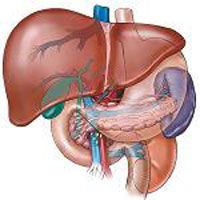Recommendations to Screen for Hepatitis B
While the US Preventive Services Task Force does not recommend screening for hepatitis B virus infection in asymptomatic persons in the general population, a recent update focuses on identifying those who are high risk and should be screened.

While the US Preventive Services Task Force (USPSTF) does not recommend screening for hepatitis B virus (HBV) infection in asymptomatic persons in the general population, a recent update focuses on identifying those who are high risk and should be screened.
People who are at high risk of HBV include those from countries with a high prevalence (>2%) of HBV infection, people infected with HIV, injection drug users, household contacts of people with the infection, and men who sleep with other men.
“Some people still remain at risk for getting hepatitis B and suffering from health complications of the disease, such as liver damage. It is important that these high-risk individuals be screened,” Task Force member Mark Ebell, MD, MS, said in a statement.
Screening asymptomatic people in the general population is not recommended since the estimated prevalence of the HBV infection in the general population of the United States is just 0.3% to 0.5%. Furthermore, most people infected with HBV do not develop complications.
According to the USPSTF’s report, people born in countries with a prevalence of HBV infection of at least 2% account for between 47% and 95% of people with chronic HBV infection in the US.
The USPSTF recommends providers consider the populations they serve when making screening decisions. For instance, there are high rates of HBV infection in areas with high numbers of immigrants from Asia or the Pacific Islands, as well as their adult children.
The US Food and Drug Administration (FDA) has approved 7 anti-viral drugs to treat chronic HBV infection: interferon-α2b, pegylated interferon-α2a, lamivudine, adefovir, entecavir, telbivudine, and tenofovir. There are no combination therapies approved and tolerability, efficacy, and resistance rates of these therapies are low.
Upon reviewing improvements in intermediate and clinical outcomes after antiviral therapy, the USPSTF concluded that these regimens improve health outcomes. Furthermore, the HBV vaccination is effective at decreasing disease acquisition in high-risk populations.
The current strategy to eliminate HBV transmission includes vaccinations of all infants, as well as adolescents and those high-risk individuals. According to the guidelines, in adolescents, 3 doses of HBV vaccine result in a protective antibody response greater than 95%.
“Today, most people born in the US have been vaccinated for hepatitis B, which is the best way to prevent the infection,” Ebell said. “Because of this, most people in the US are not at risk of getting hepatitis B.”
